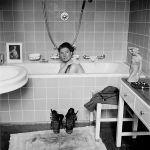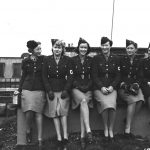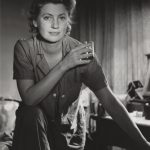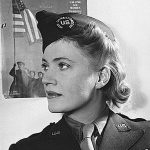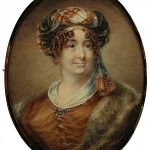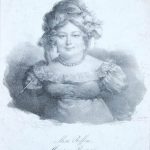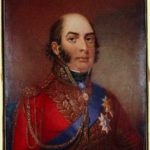Name: Elizabeth “Lee” Miller
Dates: April 23, 1907 – July 21, 1977
- Lee Miller in a photograph she staged in Hitler’s bathtub in Munich in 1945.CreditCreditLee Miller Archives, England
- Miller with other women war correspondents who covered the U.S. Army in the European Theater during World War II in 1943. From left to right: Mary Welch, Dixie Tighe, Kathleen Harriman, Helen Kirkpatrick, Lee Miller, and Tania Long.
- ©collection National Portrait Gallery, London
- Cover for Vogue Magazine © Telrunya/WikiCommons
What She Did: Model, photographer, and photojournalist.
- Lee was born on April 23, 1907, in Poughkeepsie, New York.
- Theodore always favored Lee, and he often used her as a model for his amateur photography.
- When she was seven years old, Lee was raped while staying with a family friend in Brooklyn and infected with gonorrhea.
- She traveled to Europe in 1925, staying in Paris to study art. Miller’s time in Europe was brief, being called back to New York by her father.
- Upon her return, she enrolled in the Art Students League of New York in New York City.
- As a 19-year-old art student in New York, Lee was nearly killed when she stepped into oncoming traffic. The man who saved her was none other than Condé Nast, the founder of Vogue.
- Recognizing her striking beauty, Nast launched her as a Vogue cover girl in 1927 and she quickly became one of New York’s top models.
- Miller’s look was exactly what Vogue’s then editor-in-chief Edna Woolman Chase was looking for to represent the emerging idea of the “modern girl.”
- For the next two years she was one of the most sought-after models in New York.
- A photograph of Miller by Steichen was used to advertise Kotex menstrual pads, without her consent, effectively ending her career as a fashion model. S
- he was hired by a fashion designer in 1929 to make drawings of fashion details in Renaissance paintings but in time grew tired of this and found photography more efficient.
- In 1929, Miller traveled to Paris with the intention of apprenticing herself to the surrealist artist and photographer Man Ray.
- Although, at first, he insisted that he did not take students, Miller soon became his model and collaborator (announcing to him, “I’m your new student”), as well as his lover and muse.
- While she was in Paris, she began her own photographic studio, often taking over Ray’s fashion assignments to enable him to concentrate on his painting. S
- Together with Ray, she rediscovered the photographic technique of solarisation, through an accident variously described, with one of Miller’s accounts involving a mouse running over her foot, causing her to switch on the light in mid-development.
- Not only does solarisation fit the Surrealist principle of unconscious accident being integral to art, it evokes the style’s appeal to the irrational or paradoxical in combining polar opposites of positive and negative.
- Jean Cocteau, who was so mesmerized by Miller’s beauty that he coated her in butter and transformed her into a plaster cast of a classical statue for his film, The Blood of a Poet (1930).
- During a dispute with Ray, regarding the attribution of their co-produced work, Ray is said to have slashed an image of Miller’s neck with a razor. She left him and went back home.
- In 1932 she returned to New York City and established a portrait and commercial photography studio with her brother Erik as her darkroom assistant.
- Clients of the Lee Miller Studio included BBDO, Henry Sell, Elizabeth Arden, Helena Rubinstein, Saks Fifth Avenue, I. Magnin and Co., and Jay Thorpe.
- During 1932 Miller was included in the Modern European Photography exhibition at the Julien Levy Gallery in New York and in the Brooklyn Museum’s exhibition International Photographers.
- In 1933, Julien Levy gave Miller the only solo exhibition of her life. Among her portrait clients were the surrealist artist Joseph Cornell, actresses Lilian Harvey and Gertrude Lawrence, and the African-American cast of the Virgil Thomson–Gertrude Stein opera Four Saints in Three Acts (1934).
- In 1934, Miller abandoned her studio to marry the Egyptian businessman and engineer Aziz Eloui Bey.
- Although she did not work as a professional photographer during this period, the photographs she took while living in Egypt with Eloui, including Portrait of Space, are regarded as some of her most striking surrealist images.
- By 1937, Miller had grown bored with her life in Cairo and returned to Paris, where she met the British surrealist painter and curator Roland Penrose.
- Although not yet divorced, she was living with Penrose when war broke out.
- Miller embarked on a new career in photojournalism as the official war photographer for Vogue, documenting the Blitz.
- She was accredited into the U.S. Army as a war correspondent for Condé Nast Publications from December 1942.
- She teamed up with the American photographer David E. Scherman, a Life correspondent on many assignments. She traveled to France less than a month after D-Day and recorded the first use of napalm at the siege of St. Malo, as well as the liberation of Paris, the Battle of Alsace, and the horror of the Nazi concentration camps at Buchenwald and Dachau.
- On April 29, 1945, she walked through the gates of Dachau as it was liberated by American forces. Deeply shocked, she nevertheless photographed the evidence of the Nazis’ extermination of the Jews and other “enemies” of the Third Reich.
- The pictures are stark and sickening, and have lost none of their emotional impact.
- A photograph by Scherman of Miller in the bathtub with a shower hose looped in the center behind her head, recollecting a noose, taken at Adolf Hitler’s apartment in Munich is one of the most iconic images from the Miller–Scherman partnership.
- During this time, Miller photographed dying children in a Vienna hospital, peasant life in post-war Hungary, corpses of Nazi officers and their families, and finally, the execution of Prime Minister László Bárdossy.
- After returning to Britain from central Europe, Miller started to suffer from severe episodes of clinical depression and what later became known as Post traumatic stress disorder (PTSD).
- She began to drink heavily, and became uncertain about her future.
- In 1946, she traveled with Penrose to the United States, where she visited Ray in California. After she discovered she was pregnant by Penrose with her only son, she divorced Bey and, on May 3, 1947, married Penrose.
- Their son, Antony Penrose, was born in September 1947.
- In 1949, the couple bought Farley Farm House in Chiddingly, East Sussex. During the 1950s and 1960s,
- Farley Farm became a sort of artistic Mecca for visiting artists such as Picasso, Ray, Henry Moore, Eileen Agar, Jean Dubuffet, Dorothea Tanning, and Max Ernst.
- While Miller continued to do the occasional photoshoot for Vogue, she soon discarded the darkroom for the kitchen, becoming a gourmet cook.
- According to her housekeeper Patsy she specialized in “historical food” like roast suckling pig as well as fare such as marshmallows in a cola sauce (especially made to annoy English critic Cyril Connolly who told her Americans could not cook).
- She also provided photographs for biographies Penrose wrote on Picasso and Antoni Tàpies.
- Miller was investigated by the British security service MI5 during the 1940s and 1950s, on suspicion of being a Soviet spy
- In October 1969, Miller was asked in an interview with a New York Times reporter what it was that drew her to photography. Her response was that it was “a matter of getting out on a damn limb and sawing it off behind you.”
- Anton had a difficult and painful relationship with his mother. “It’s not easy to have a relationship with an alcoholic parent,” he says. “It was challenging, unusual and threatening. She was normally a very generous, sensitive and kind person, but when drunk she would be verbally abusive and cutting. The things she’d say would be really astonishing. She never hit me – she didn’t need to. She could do all the damage with words.”
- Her drinking took its toll on her looks. Antony thinks she was devastated by the loss of her beauty. “It was desperate for her. There was an almost wilful self-destruction.”
- In later years, Anton says, Lee recovered to some extent. “She managed to claw her way out of alcoholism and depression, and reinvented herself as a gourmet Surrealist cook.”
- Guests were served blue spaghetti, green chicken and pink cauliflower breasts – complete with nipples and pink sauce.
- Thanks in part to Antony’s wife Suzanna, mother and son were eventually reconciled. Lee held her first grandchild, Ami, in her arms a few weeks before dying from cancer.
- Lee died from cancer at Farley Farm House in 1977, aged 70. She was cremated, and her ashes were spread through her herb garden at Farley.
- Shortly after Lee’s death, Suzanna discovered the stash of negatives, prints and articles in the attic at Farley Farm, the Penroses’ home near Chiddingly, East Sussex, where Antony still lives.
- “Until then, I’d seen her as a booze-soaked, hysterical woman, “Anthony says. “I had to re-evaluate my entire attitude to her.”
- At the time she died, Lee’s work as an artist was nearly forgotten, though Man Ray’s photographs of her continued to be well known. Since the discovery of her photos, Anthony has worked tirelessly to restore her reputation. Much of her work is now archived online, and Anthony has written biographies of both his parents. Exhibitions of Lee’s photos are shown around the world, and he conducts tours around the family home.
Legacy
- Anton owns Farley Farm and offers tours of the works of Miller and Penrose. The house is home to the private collections of Miller and Penrose, their own work and some of their favourite pieces of art.
- Her pictures are accessible at the Lee Miller Archive.
- In 1985, Penrose published the first biography of Miller, entitled The Lives of Lee Miller.
- Antone and David Scherman collaborated on the book Lee Miller’s War: Photographer and Correspondent With the Allies in Europe 1944–45, in 1992.
- In 2005, Miller’s life story was turned into a musical, Six Pictures Of Lee Miller, with music and lyrics by British composer Jason Carr. It was premiered at the Chichester Festival Theatre, West Sussex. Also in 2005, Carolyn Burke’s substantial biography, Lee Miller, A Life, was published.
- In 2007, Traces of Lee Miller: Echoes from St. Malo, an interactive CD and DVD about Miller’s war photography in St. Malo, was released with the support of Hand Productions and Sussex University.
- In 2015, an exhibition of Miller’s photographs at the Scottish National Portrait Gallery, Lee Miller and Picasso, focussed “on the relationship between Lee Miller, Roland Penrose and Pablo Picasso.” In the same year, a work of historical fiction, The Woman in the Photograph by Dana Gynther, was published. It builds its story around Miller’s affair with Ray in Paris circa 1930.
- In 2019, a work of historical fiction, The Age of Light, by Whitney Scharer, was published. It tells the story of Miller’s life and work, and her relationship with Man Ray.

Name: Sarah Biffen
Dates: October 1784- October 1850)
- Sarah Biffen’s self-portrait
- image: Engraving of Sarah Biffen from a self-portrait.
- Duke of Kent, by Sarah Biffen – Miniature Watercolour on Ivory
What She Did: Painter
- Sarah was born in October 25th , 1784 into a poor farming family in East Quantoxhead, Somerset.
- She wasborn with no arms and vestigial legs due to a condition known as phocomelia which affects bone and limb development in utero. P
- Phocomelia can be caused by thalidomide, a drug that was marketed to pregnant women in the 1950s to alleviate morning sickness.
- Of the thousands of cases that resulted from thalidomide in the 50s, only about 50% survived.
- Sarah’s condition was so unusual, some villagers were actually scared of her.
- Without the aid of doctors, support, or the internet, her parents weren’t sure how to care for Sarah and treated her as a fragile, sickly child.
- However, as children are wont to do, Sarah pushed her boundaries and came up with creative ways to do everyday activities like sewing with her mouth. She literally learned to thread the needle, tie a knot, use scissors, and made her own dresses.
- Then, she taught herself how to read and write by putting a pen in her mouth. She would carry her pens around using loops she sewed in the shoulders of her dresses.
- When she was 12 or 14, a traveling showman named Emmanuel Dukes passed through towns and saw Sarah.
- Emmanuel offered Sarah room, board, and a salary to become an attraction in his traveling sideshow.
- Sarah joined Emmanuel’s show, billed as The Astonishing Curiosity and The Limbless Wonder. People paid upwards of 2 shillings to watch Sarah sew, write, use scissors, and more.
- This next part is fuzzy: Some records say that Sarah already knew how to paint while others say Emmanuel, who had a bit of an art background, taught her by putting a paintbrush in her mouth.
- Either way, Sarah began drawing landscapes, painting miniature portraits on ivory, keeping her pens and paintbrushes in the loops she sewed onto the shoulders of her dress. Her art would sell for 3-10 guineas each (a little over $300 today).
- Emmanuel, part of a long, proud tradition of predatory talent managers, took
most of the profits while Sarah earned a meager salary of 5 pounds a year. - Word of Sarah and her work began to get around and she became a well-known attraction around fairs and festivals.
- Emmanuel would bet that if Sarah failed to write, paint, sew, or use scissors with her mouth, he’d pay 1,000 guineas.
- In 1808, George Douglas, the Earl of Morton attended the St. Bartholomew’s fair. He wanted to see if Sarah was really as good as they said. She painted his portrait and proceeded to blow his mind.
- He proceeded to tell all of his influential rich friends whose minds were also blown.
- The Earl sponsored Sarah so she could receive art lessons from William Craig, a painter with the Royal Academy of Arts.
- She began to receive more prestigious patrons and the Earl encouraged her to strike out on her own.
- She was anxious to leave Emanuel Duke, he had been managing her for 16 years.
- Sarah set up shop in Bond Street where she began painting a series of impressive clients, including Queen Victoria, Prince Albert, Georges 3 $ 4, and many others. She also served as an official artist in the King of Holland’s court and she even painted Ada Lovelace!
- Sarah became a huge deal, not just because of her unique medical condition, but because her art was incredible.
- Her miniature portraits were small and delicate, but also highly detailed. Charles Dickens mentioned her in books and she received an award for her work from the Society of Arts.
- Sarah met and married William Wright, a banker. However, the marriage didn’t even last a year. He left her with an alimony of 40 pounds a year.
- Then, things got worse financially when the Earl of Morton died in 1827. Without a noble sponsoring her, Sarah began receiving fewer and fewer commissions and her finances began to dry up.
- While Queen Victoria, in acknowledgement of her artistic skill, awarded Sarah a Civil List pension, she still had to go back to painting at festivals to make ends meet.
- Though life was undoubtedly difficult for Sarah, she always kept a positive outward demeanor.
- Dedicated patrons helped finance Sarah in her final years and it’s through these financial documents that we get more insight into her attitudes in life.
- She insisted that Emmanuel and her husband had treated her well, though this is doubtful. She seemed determined to maintain a positive attitude and not speak ill of anyone.
- On October 2nd , 1850 at 66 years old, Sarah Biffen passed away. She is buried in St. James Churchyard in Liverpool England.
- The epitaph on her grave reads as follows:
“Reader pause. Deposited beneath are the remains of Sarah Biffin, who was born without arms or hands at Quantox Head County of Somerset, 25 th of October, 1784, died at Liverpool, 2 nd October, 1850. Few have passed through the vail of life so much the child of hapless fortune as the deceased; and yet possessor of mental endowments of no ordinary kind. Gifted with singular talents as an Artist, thousands have been gratified with the able productions of her pencil! Whilst versatile conversation and agreeable manners elicited the admiration of all. This tribute to one so universally admired is paid by those who were best acquainted with the character it so briefly portrays. Do any inquire otherwise- the answer is supplied in the solemn admonition of the Apostle- Now no longer the subject of tears, Her conflict and trials are o’er In the presence of God she appears”
LEGACY
- Sarah’s work is admired by modern day artists, regardless of the obstacles she had to overcome to produce it.
- Sarah is also a testament to how people are about to adapt and persevere in daunting situations.
